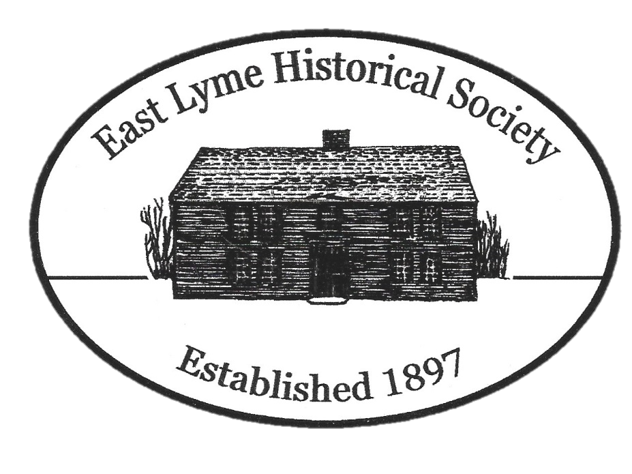Niantic Community Church
The Second Ecclesiastical Society of Lyme
The colony of Saybrook, founded in 1635 at the mouth of the Connecticut River, extended some twenty miles along the shoreline from Clinton to the village of Niantic. In 1665, in what is known as the Loving Parting, the township of Lyme was established on the eastern shore of the river, and with it, the Ecclesiastical Society of Lyme, now known as the First Congregational Church of Old Lyme.
By 1718, the families on the eastern side of this township, tired of struggling with travel conditions, had successfully petitioned the General Court of Connecticut to grant a separation from the Lyme church. The first meeting of the Second Ecclesiastical Society of Lyme was called on February 15, 1719, and the Reverend Mr. George Griswold, a recent graduate of Yale College, was chosen as minister. In 1722 a small wooden meetinghouse was built in the center of the community, where Society Road and Riverview Road intersect today.
The small congregation added 116 members, including 15 Nehantics, during the Great Awakening of the 1740s, but the membership gradually dwindled to two elderly women, and the condition of the wooden meetinghouse deteriorated. Another religious resurgence in the 1790s, however, led to a revitalization of the congregation and repairs to the structure. In 1825 a parsonage was built on property to the west of the meetinghouse.
In 1831, the congregation voted to build a new meetinghouse, which would become known as the Stone Church, about 50 feet north of the original wooden structure. It was constructed of undressed stone from the nearby quarries and was 50 feet by 35 feet in size. There were four stately pillars in front and marble floors, and it was topped with a graceful belfry and spire. The cost of construction was estimated at $2,500. The new meetinghouse was apparently used for the first time in January of 1833.
As the center of population shifted to the shoreline village of Niantic in the second half of the nineteenth century, it was clear that a new place of worship should be built there as well. Mrs. Lydia M. Lee donated a lot on Lincoln Street in March 1876, and construction began. The church was first used for meetings in March 1879, and a parsonage was built next door a few years later.
The marble portion of the Stone Church was sold in 1870 to raise funds for the operation of the church, and, in April 1876, the earlier parsonage and other buildings were sold at public auction. The building was eventually torn down, with some of the stone used to build an ice house and some used to build the fireplace in the old Niantic Library (now the Children’s Museum of Southeastern Connecticut). All that remains on the original site is the old bell and a few of the old stones.
Methodist Episcopal Church
In the early years of the 19th century, itinerant ministers attempted to organize Methodist classes in East Lyme, but none were successful until 1836. The first Methodist Church was built in East Lyme in 1843, at a cost of $1,000, on land donated by Captain Avery Smith at the corner of present-day East Pattagansett Road and Pattagansett Court. A parsonage was built to the rear of the church in 1858.
By 1873, the Methodist congregation, which was largely comprised of quarrymen from the granite quarries in East Lyme and Waterford, had outgrown its meetinghouse, and a new church was built in the heart of the village of Niantic, on Main Street. A parsonage, also on Main Street, soon followed.
Economic and population changes in the 20th century led to a decline of activity in both the Methodist and Congregational churches, and they were faced with the possibility of closing. On June 1, 1953, the two congregations merged in to the newly incorporated Niantic Community Church. Services were held in the Lincoln Street facility until the present building, on Pennsylvania Avenue, was built in 1961. The former sanctuary on Lincoln Street is now a bed-and-breakfast, and the Congregational and Methodist parsonages are private residences. Both of the Methodist church buildings have been taken down.
Flanders Baptist and Community Church
During the time of the Great Awakening, many colonists chose to establish new communities of worship, distinct from the official Congregational Church. Known as “Separates”, they were considered dangerous radicals, and subject to arrest and imprisonment. Despite the risks, many Separatist churches were established throughout the colony, including in the township of Lyme. By 1748, a group of Separatists were meeting in a private home on Boston Post Road, led by Ebenezer Mack and Elisha Miller. Mr. Mack was ordained as a Separatist minister in 1749. In 1752, both Mack and his followers embraced Baptist teachings, and the church was formally recognized as a Baptist Church.
Over the next twenty years, the congregation faced many challenges, but the arrival of Brother Jason Lee in 1774 led to a period of new energy and growth. In fact, three daughter Churches were formed in the 1780s: in Waterford, the Chatham section of northern Lyme, and in Marlow and Lempster, New Hampshire, to which a large group of Lyme residents had emigrated. Two more daughter churches were established in 1842: in (Old) Lyme, and in Niantic.
In May 0f 1842, the congregation voted to build a new meetinghouse farther east on Boston Post Road, where the population center had shifted. The new meetinghouse was dedicated on June 1, 1843, and the old meetinghouse torn down and the lumber sold to help pay for the construction. The parsonage was built next door in 1879. Both buildings are still in their original locations and in use by the church. The church was known as the First Baptist Church of East Lyme until 1929, when it became the Flanders Baptist and Community Church.
